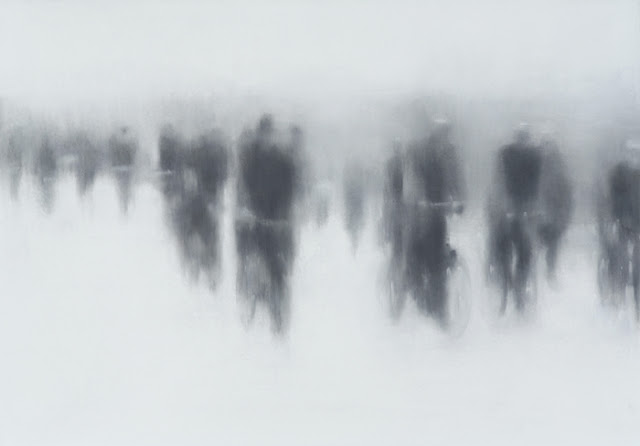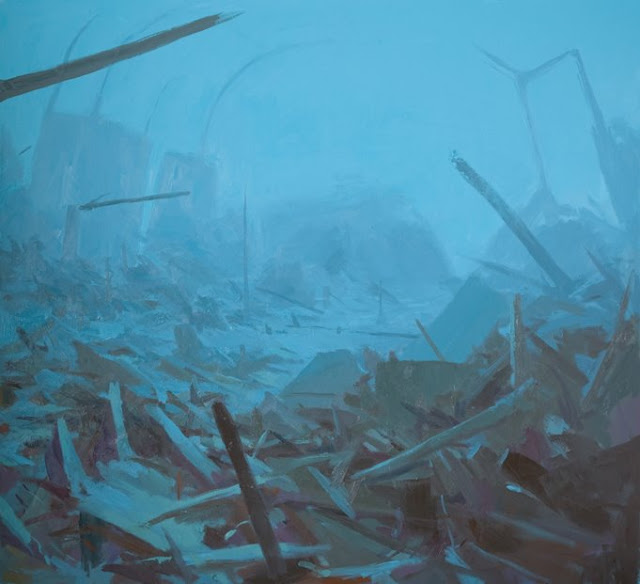 |
| "Passage", 2010 72 x 68 inches, oil on canvas |
 |
| "Maintenance Walk", 60 x 60 inches, 2010 oil on canvas |
 |
| "Seam", 2009 84 x 71 inches, oil on canvas |
 |
Tommy Knocker 2007 Oil on silk 68 x 43 inches
Painted in Federal Mill #3, Leadington, MO |
 |
Site Painting Photo by Malcolm Gay
Tower painting "Big Wheel" (above) inside a "borrowed" studio- (trespassing) in East Saint Louis |
Cindy Tower's large scale paintings of abandoned factories and similar sites, capture the romance of decay. Post-industrial America (and Europe, and Russia) has become a kind of 'pilgrimagic' destination for recorders of a lost civilization; like those 18th century artists painting the great monuments of antiquity rising from bases of rubble and dripping with vines. Only here the lost age is a much more recent past. And it's not as though the technology has vanished. Much of it has merely moved to developing countries where all the same stuff is still shiny and new. The scale and scope of the abandonment has captured the imagination of quite a few artists, especially photographers who share their documents on group sites like
Flickr and
LiveJournal. While photographers have the advantage of being able to get in and out of these sites relatively quickly (almost without exception such sites are legally off limits), Ms. Tower's work, done on location, intensifies the experience in a way that a photograph cannot. Her painting is a kind of post industrial impressionism. The chaos and the detritus are enhanced in loving layers of marks and colors allowing the more legally minded viewer to get a real visceral sense of what these locations are like, and more importantly, what they mean.
She does much more work than what I've shown here, including installations and landscape paintings, but her almost fussy brushwork lends itself exquisitely to this particular subject matter.
There is so much to look at on her website (
www.cindytower.com ) that you may want to bookmark it for a bit and go back several times to see it all.
I'd like to thank
River Styx magazine for putting her work on the cover so I could find out about it.













































